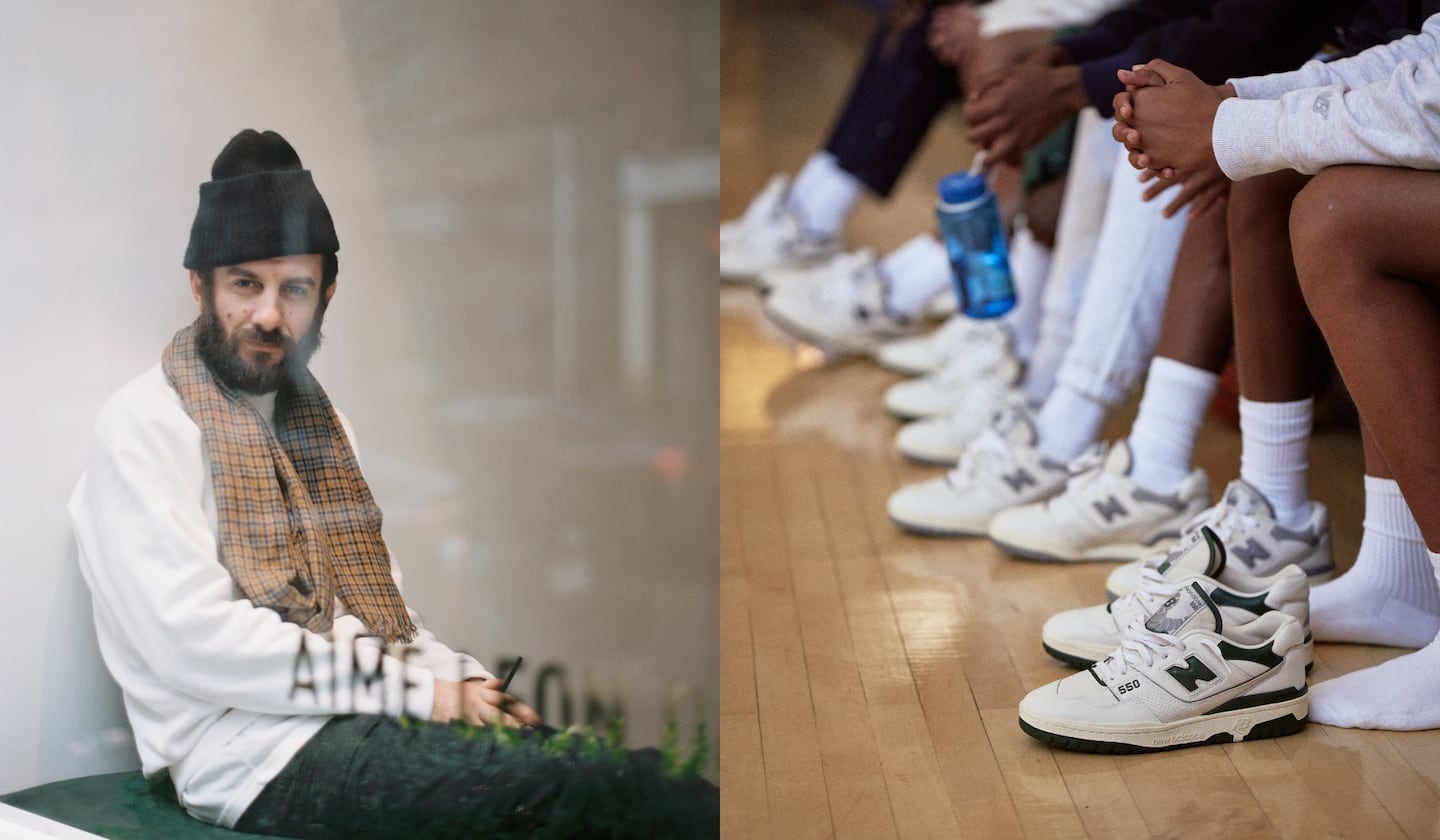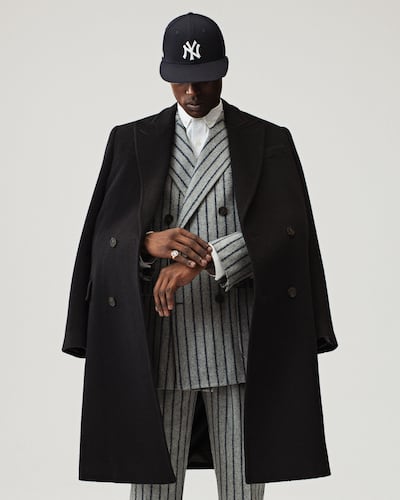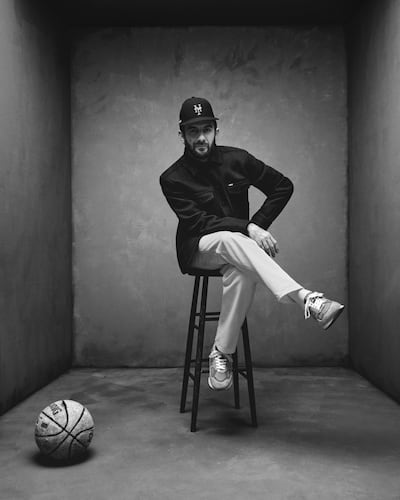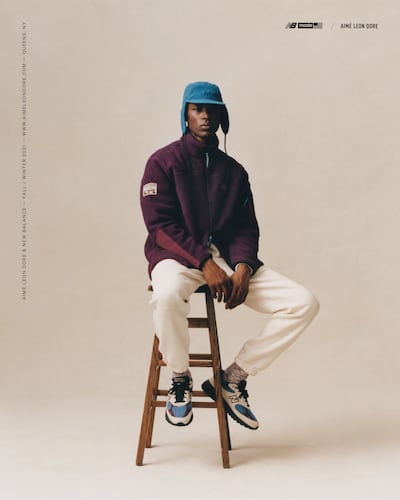
The Business of Fashion
Agenda-setting intelligence, analysis and advice for the global fashion community.

Agenda-setting intelligence, analysis and advice for the global fashion community.

NEW YORK — Teddy Santis believes we’re living in a menswear renaissance.
“I think this era of menswear will be spoken about for a very long time,” said Santis. “It’s a beautiful thing.”
Since founding the New York menswear label Aimé Leon Dore in 2014, Santis has helped to usher in a softer, Americana-inflected sportswear moment that bridges the gap between streetwear and prep.
His brand is faithfully rooted in the same ‘90s New York sensibility — hip-hop, graffiti artists, Ralph Lauren, basketball — that’s inspired a generation of designers. Still, he’s managed to carve out a unique positioning for his line of quilted cardigans, rugby shirts and baseball caps by infusing the visual language of that era with a new sense of immediacy, sensitivity and specificity. Aimé Leon Dore (often shortened to ALD) is in many ways an ongoing homage to Santis’ upbringing in Queens and the figures that animated it.
ADVERTISEMENT
Press-shy and secretive, Santis’ quiet approach to design and marketing seems to be working: without shows or laudatory profiles, ALD has exploded in popularity, with its boutique and café on Nolita‘s Mulberry Street becoming a sort of pilgrimage site for his global following.
In recent years, ALD’s success has attracted a myriad of collaborations, culminating with footwear giant New Balance appointing Santis as creative director of its Made in USA line last April. The release of his first Made in USA collection is planned for this spring.
In January, LVMH Luxury Ventures, the French conglomerate’s arm for investing in smaller brands, took a minority stake in Aimé Leon Dore for an undisclosed sum. Both LVMH and Santis declined to comment on ALD’s revenue or the financial terms of the investment. But the deal seemed to validate Santis’ approach, as well as boost morale in the US fashion system more broadly.
“It’s been a long time since there was this much energy around one particular brand,” said Josh Peskowitz, an operating partner at New York-based investment firm Untitled Group who was featured in an ALD look book. “It’s nice that Europeans are paying attention to American sportswear again.”
Now, Santis is facing bigger expectations in regards to growing both Aimé Leon Dore and New Balance. For New Balance, the hope is Santis can keep bringing a refined perspective to its archives and keep animating its offering as it transitions from a rapid-fire rhythm of collaborations to a tighter cast of long-term partnerships. At Aimé Leon Dore, the brand will look to expand far beyond its Mulberry Street flagship to create the building blocks of a heritage brand.
ALD’s Early Days
Aimé Leon Dore launched in 2014, but struggled in its initial years — a period Santis himself admits was “really bad.”
“I didn’t know how to make clothes; I wasn’t classically trained,” he said. “It was a lot of just trial and error, just falling on my face a bunch until I figured it out.”
ADVERTISEMENT
Still, industry figures took note of the brand’s early work. “Even then the lookbook was solid,” said Peskowitz, who in 2014 was Bloomingdale’s fashion director, of Santis’ first collection. It helped that Santis was friends with Kith founder Ronny Fieg, who helped champion the brand in its initial years.

Santis worked to refine the product, grow his team and hone his idea of the ALD consumer. There’s a strong, cohesive and easily identifiable narrative behind the brand’s collections and compelling lookbooks (which were passed around by fans online rather than just serving as industry documents). A cast of New York insiders including DJ Premier and rapper Action Bronson started to participate, posing in the brand’s campaigns modelling staples like its $200 button-ups, $300 rugby shirts polos and $60 baseball caps.
With his ‘90s New York vibe firmly established, Santis also started to incorporate more eclectic and far-flung references, like fishing garb from his family’s native Greece.
“He has such an astute understanding of branding and I think that’s his superpower,” said Jian Deleon, men’s fashion and editorial director at Nordstrom. “As much of a dirty word as authenticity is, the ALD New Balance versions have always felt real, whether it’s the storytelling or the way it’s presented.”
Santis was initially sceptical when approached for a potential partnership by Joe Grondin, New Balance’s business unit manager, collaborations and energy, in 2017, but after talking with him more it started to make sense. ALD was finally hitting its stride, and both brands were looking for a longer-term partnership, rather than a one-off collab. There seemed to be some shared values, as well — a long-term vision and a focus on honest design.
“That’s the romance behind it, right? They’re a family-owned and operated private company,” said Santis. “I’m the same way here.”
The first New Balance collaboration, in 2019 — a set of colourful 997 sneakers — marked an inflection point for both brands.
For New Balance, the collaboration was a part of a broader initiative, launched in 2017, to make the label “a brand with heritage versus a heritage brand,” said Chris Davis, New Balance’s chief marketing officer.
ADVERTISEMENT
During the next three years, the brand worked to inject novelty throughout its product offering and communications, dropping collaborations on a weekly basis with partners that have included Miu Miu, JJJound, Aries and Salehe Bembury.
For Santis, the collaboration gave him a greater spotlight on the global stage at a critical juncture in ALD’s development: The Mulberry street store and cafe opened a month after that first collaboration was released. New Balance and ALD have since released six collaborations together, with a focus on bringing Santis’ eye to the brand’s archives and reviving older shoe models.
Since the partnership, Aimé Leon Dore has also become a cult menswear success. A committed local client base and far-reaching online audience have allowed him to transition his brand to a direct-to-consumer business, pulling back from e-tailers. New Balance’s profile has similarly evolved to court the fashion crowd and younger, more streetwear-primed consumers, receiving the shoe brand of the year award from several outlets including Hypebeast.

Reflecting the Wider Market
The growth comes as a wave of legacy brands, big and small, have hired designers from outside the traditional fashion system in a bid to better address younger, streetwear-informed consumers.
In May 2021, Brendon Babenzien, founder of Noah, another downtown Manhattan clothing brand located a few blocks from Aimé Leon Dore, was appointed creative director of J.Crew. Rhude’s Rhuigi Villaseñor was appointed creative director of Bally in January.
Rather than being charged with revamping an entire brand, Santis’ partnership with New Balance remains limited in its scope. New Balance’s Made in USA line only represents about five percent of its American business, estimates Matt Powell, senior sports industry advisor at The NPD Group. America, in turn, represents less than 40 percent of the brand’s turnover.
The line has also weathered controversy this year after a lawsuit from consumers alleged the company had made misleading claims about where its footwear was produced. In response, the brand released a statement: “New Balance seeks to be transparent in all consumer communications, prominently disclosing that where domestic value is at least 70 percent, the brand’s footwear is labelled Made in the USA.”
“This is very much like a collaboration,” Powell said. “These kinds of collaborations are never commercial. They are really meant to get press mentions.”
Santis could eventually expand his purview, and lend his eye to a broader range of New Balance’s offerings, Davis said.
Still, Santis doesn’t want to become overly reliant on his work with Boston-based New Balance. He will remain based in New York, with his primary focus on Aimé Leon Dore.
“What happened with a lot of other sportswear brands in the past decade [is] they found these great partners … and that partnership became so big, it outshined what the business needed from a foundational standpoint,” he said. “Then you start hurting these brands by actually trying to help them.”
Over the past 18 months, Aimé Leon Dore’s New Balance collabs have earned $30.5 million in media impact value (MIV) and over 7,500 placements, according to data analytics firm Launchmetrics. While New Balance declined to comment on sales from collaborations, Davis said the Aimé Leon Dore collaborations rank among their most popular ever.
Strong performance on the resale market indicates the products are as desirable as they are good at generating media value. The sneakers trade for well-above retail value on StockX, fuelling demand for Santis’ elevated basics beyond his own shoes.
The 550s, a shoe that previously had little demand on StockX prior to Santis’ collaboration, are now its most popular New Balance sneaker, according to the platform.
Looking Ahead

Both New Balance and Aimé Leon Dore seem to have their finger on the pulse of a bankable cluster of sneaker buyers who have aged out of the ultra-graphic, logo-driven drops of an earlier streetwear era. Those customers still have a nose for hype but want it in a quieter, more refined form.
“It started feeling a little weird to me that I was just a walking billboard,” said Robert Liss, a commercial property insurance consultant and sneaker enthusiast from Milwaukee, of his own style evolution over the past few years.
Liss discovered the brand through its initial New Balance collaboration and is now an active member of a dedicated channel for ALD devotees on messaging app Discord. The designs are “a little bit more subtle” than other sneaker collaborations, according to Liss.
“I’m turning 29 next month, I don’t need flashy Jordans,” he said.
As New Balance prepares to roll out Santis’ first collection as creative director, the brand is trying to strike the right balance in terms of the partnership’s scale. The company hopes for a broader reach than the hard-to-cop, super-limited capsule drops that are driving huge multiples for collabs like Louis Vuitton x Nike on the resale market. But they don’t want to dilute the partnership’s specificity and impact either.
“We’re not trying to have this very scarce product and we’re also not trying to flood the market,” said Santis. “We’re making products for the guy who actually wants to wear them.”
New Balance says it’s looking to go “fewer, bigger, [and] better” with collaborations,” said Davis.
Striking a balance between archives and new silhouettes will also present a challenge, but Santis feels confident in finding the right balance: “It’s really difficult but I think when a brand like New Balance has the heritage it has, it allows for that opportunity to be worth the risk.”
For Santis, opportunity will continue to call outside of ALD. Several of his contemporaries in the American menswear scene have gone on to direct luxury brands and heritage companies. Recent hires at LVMH from the streetwear universe, like Kenzo’s new creative director Nigo, beg the question of whether Bernard Arnault might be looking at Santis for a role beyond ALD.
Still, Santis insists that building ALD into a menswear business with staying power is his priority.
“I would love to do what I’m doing right now for the rest of my life,” said Santis. “I wouldn’t want to do anything else besides ALD forever.”
Signs of streetwear’s importance to the luxury business model were everywhere this week, from Virgil Abloh’s last collection for Louis Vuitton to LVMH’s Aimé Leon Dore deal to Bally’s appointment of Rhuigi Villaseñor.
The French luxury giant’s venture capital arm is taking a minority stake in the New York streetwear brand founded by Teddy Santis.
A Miami runway show originally intended for Louis Vuitton’s top clients became a tribute to the late designer in the presence of his friends, collaborators and colleagues.
As the German sportswear giant taps surging demand for its Samba and Gazelle sneakers, it’s also taking steps to spread its bets ahead of peak interest.
A profitable, multi-trillion dollar fashion industry populated with brands that generate minimal economic and environmental waste is within our reach, argues Lawrence Lenihan.
RFID technology has made self-checkout far more efficient than traditional scanning kiosks at retailers like Zara and Uniqlo, but the industry at large hesitates to fully embrace the innovation over concerns of theft and customer engagement.
The company has continued to struggle with growing “at scale” and issued a warning in February that revenue may not start increasing again until the fourth quarter.